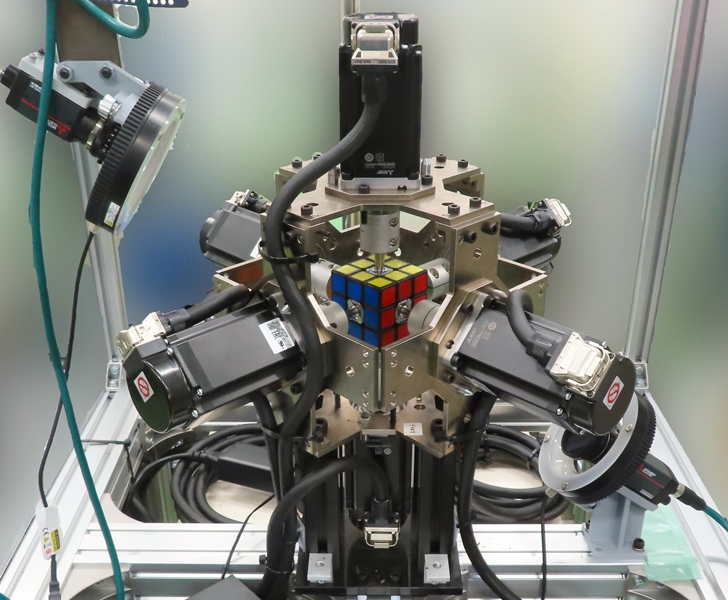
Mitsubishi
The last time a human set the world record for solving a Rubik’s Cube, it was Max Park, at 3.13 seconds for a standard 3×3×3 cube, set in June 2023. It is going to be very difficult for any human to pull off a John-Henry-like usurping of the new machine record, which is more than 10 times faster, at 0.305 seconds. That’s within the accepted time frame for human eye blinking, which averages out to one-third of a second.
TOKUFASTbot, built by Mitsubishi Electric, can actually pull off a solve in as little as 0.204 seconds on video, but not when Guinness World Records judges were measuring. The previous mechanical record was 0.38 seconds.
Mitsubishi Electric’s TOKUFASTbot, solving a Rubik’s-like puzzle on May 7, two weeks before judges showed up to verify its world-record speed.
There are a few footnotes and caveats to what would otherwise be an incremental gain and nifty slow-motion video. The first thing is that the world record reported is for “fastest robot to solve a rotating puzzle cube.” That intriguingly sidesteps the much better-known “Rubik’s Cube” identifier. Rubik’s notably lost its trademark on any rotating 3×3×3 cube puzzle game in Europe. Perhaps Mitsubishi and Guinness simply wished to avoid touching a trademark registered to a company with a known litigation history.
Alternatively, you might ask if this was a specially modified cube. Was there some kind of lubrication involved, given the role friction must play in shaving hundredths of a second off a prior world record? Guinness’ post notes that there was “an unexpected issue” with Mitsubishi’s attempt: “the puzzle cube struggled to keep up with the speed of the robot!” (exclamation theirs). The solution was vaguely described as the team fine-tuning the machine, according to Guinness. The cube certainly looks the part of a regular Rubik’s. But if you’re looking for an asterisk so that humans can hold onto some kind of Rubik rubric, that might be one angle.
-
A Google translation of a portion of Mitsubishi’s detail on their puzzle-solving robot.
Mitsubishi -
Google translated image from Mitsubishi’s color AI detail.
Mitsubishi -
Close-up of Mitsubishi’s positioning algorithms at work (as translated by Google).
Mitsubishi
On a Google Japanese-to-English translation of Mitsubishi’s press release about the record, Mitsubishi provides some details about this particular robot:
- It is a camera, an industrial PC, a touch panel, and a 6-axis servo motor, connected to some very big sequencers, motion units, and servo amplifiers
- It can rotate its arms 90 degrees in 0.009 seconds
- It used “a color recognition algorithm that applies AI technology”
- Key to the robot was “high-speed signal connections and control between devices)
- The spinning (“winding”) arms come from the team’s experience in both home appliance and railway building, specifically making wire coils during motor manufacture
- AI worked to differentiate colors when positioning, shadows, or lighting might trip up a color sensor
The hardest part of the solve, seemingly, was the orange and red. Orange and red, especially when viewed at an angle with reflective light, can appear very similar to a sensor taking in simple capture data. I am heartened that a team of experienced industrial engineers found themselves tripped up by the same issues I have when playing Balatro or other games with too-close red/orange color schemes.
While you may lack for a team of trained motor-winding engineers and a servo motor, you can get better at solving Rubik’s Cubes.
Listing image by Mitsubishi




















+ There are no comments
Add yours